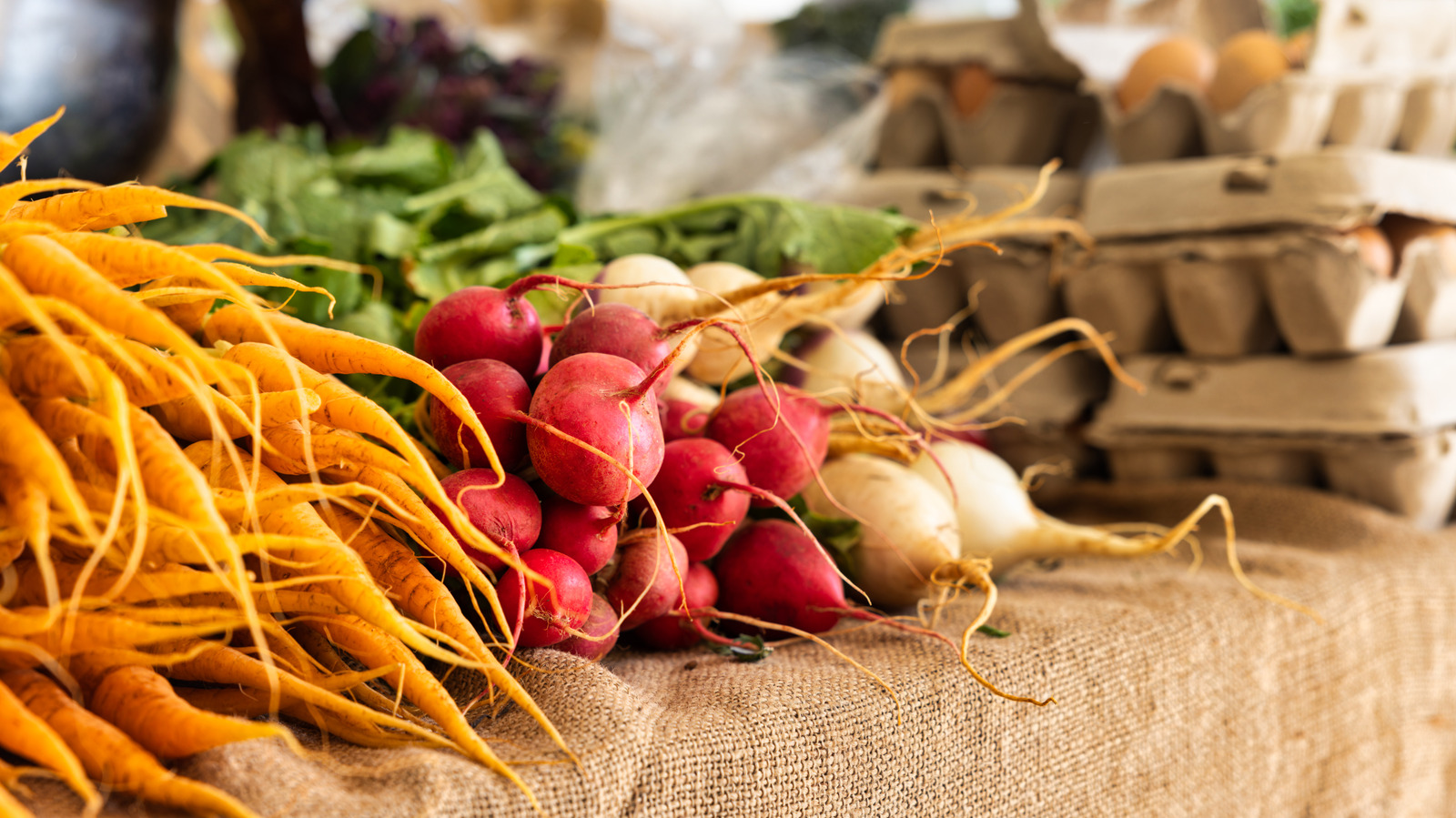As the weather starts to get more consistent, so do your visits to the farmers’ market. But if you feel like those farmers’ market trips have only gotten more costly, you’re not alone. As we’ve seen inflation raise the prices of everything from store and diner-bought eggs to beef, and from dairy products to flour, the farms behind your go-to farmers’ market vendors have been hit just as hard, experiencing price hikes on seeds, seed trays, liquid fertilizer, soil, and even jars, ribbons, and stickers used for packaging. Farmers have been forced to get more creative in response, finding ways to offset their expenses. In many cases, however, the price hikes have been unavoidable, which is where you have to start getting creative.
From which farmers’ market you go to, to going in with a budget and walking through before you decide buy, and from taking advantage of bad weather days or simply arriving later in the day to building relationships with your farmers’ market’s vendors — you have a lot more control over your spending than you think. There are plenty of ways you can be creative and keep your trips there affordable; that way, you can keep supporting your local community while enjoying all of the delicious, in-season produce it provides.
Choose your farmers’ market wisely
Sometimes, the issue of keeping your farmers’ market trips affordable is as simple as the place you’re shopping at. While it’s true that farmers’ markets in general have gotten much more expensive, some are more so than others. Every market has different prices depending on the location, reflecting the cost of things such as vendor fees, staffing costs, and farming practices, which can vary greatly from state to state, city to city, and market to market. Farmers’ markets are businesses, after all, and there are costs to keeping them up and running.
While, it wouldn’t be surprising to find that shopping at a farmers’ market in a more affluent neighborhood is more expensive than shopping at one located in another, less affluent area, there aren’t necessarily any hard and fast rules when it comes to determining how expensive any one market will be. Although, generally speaking, farmers’ markets in the city cost more. There are also certain markets that do accept SNAP benefits, and it’s worth checking the USDA’s SNAP Retailer Locator if you’re eligible to receive them. Of course, however much you spend at any one place won’t just depend on where you shop, but also how you shop at the farmers’ market.
Go in with a budget, and look before you touch
One of the most basic ways to make your farmers’ market trips more affordable is to plan your budget. Whether you cap yourself at $25, $50, or $100, knowing exactly how much you feel comfortable spending before you arrive allows you to buy accordingly. But, if just having a number in mind isn’t enough for you to withhold yourself from buying everything you see — when you see those bright leafy greens and juicy tomatoes, all common sense might go out the window along with your money — there are extra precautions you can take.
One way to keep yourself from going overboard on how much you spend at the farmers’ market is to hit the ATM before you go. Knowing your budget, you can then take out as much cash as you feel comfortable spending, and leave your card at home. Ignoring the Apple or Google Pay on your phone, this makes it literally impossible to spend more than you have — plus, with cash in hand, you do the vendors a courtesy. But you’re still going to want to pace yourself. Before you buy anything, do a full walkthrough and take notes on the prices as you do. Keeping in mind what staples and pantry items you have stocked at home, you can start to form an idea of the meals you can make throughout the week based on your budget.
Head to the market later in the day for leftovers
It’s not just about which farmers’ market you go to, but the time and day you go — and, should you show up late to the party, you can end up getting some of the best deals. That’s because a lot of vendors only set up shop so many times throughout the week, if not once. Whatever they don’t sell on that day has to be packed back up, and either gets composted or donated to a local food bank or shelter. Regardless, if they don’t sell it, they don’t make any money from it. So, while you do risk some vendors selling out by showing up later in the day, you are also more likely to be offered a nice deal on what’s left.
The day you go to the farmers’ market can also influence how likely you are to come across a good deal. For instance, if you have a weekday market local to you, you’re much more likely to come across discounts for the simple fact that business is generally slower. The same thing goes if you wake up on Saturday or Sunday, and it’s raining or the weather is off. When that happens, a lot of people choose to stay home, and vendors anticipate that kind of thing. For that reason, they’ll sometimes offer discounts or deals to help encourage sales and help reduce the amount of food or produce they have to pack back up.
Be open-minded about your produce
If you want to save at the farmers’ market, you can’t be picky, especially when it comes to your produce. One of the main benefits of shopping there is that you get to enjoy prime season produce at peak ripeness, which is part of the reason why the produce you buy at farmers’ markets tastes so much better than what you get from the store. You also get the benefit of knowing exactly how and where they were grown — and if you do hope to save on your produce at the farmers’ market, none of that has to be sacrificed. You just have to be more open-minded about how your produce looks.
Ugly produce is one of the biggest drivers of food waste, with the majority of people passing up a double strawberry or deformed orange just because of how it looks. If you’re not one of those people, and you care more about how your produce tastes than it looks, the fact that you’re buying your fruits and vegetables from the farmers’ market already means you’re getting the best of the best. Odds are, every vendor has a couple of deformed strawberries or odd-shaped apples to spare, and if you’re willing to take them off their hands, they might just offer you a discount. It’s all coming from the same place either way, so it doesn’t hurt to ask.
Build relationships with the vendors
Last but not least, the final way you can keep your farmers’ market trips more affordable is by building relationships with the vendors themselves, but not necessarily for the sole purpose of being offered or given something. Aside from avoiding committing certain faux pas while you’re shopping around the market, it’s also worth talking with the vendors working to get an idea of the products they’re selling and how they’re grown or made. While most of what’s sold at farmers’ markets can be assumed to be organic, it is always worth asking about specific farming practices to gain a better understanding of what you’re buying and where it comes from.
Apart from questions about the produce itself, it’s also worth asking vendors specifically about the farm, such as where it’s located, how big it is, how long they’ve been farming it, and what kinds of things they grow. Another way to spark up conversations is to ask questions about the produce they’re selling, especially if it’s something you don’t recognize. From there, you can get an idea of what they sell during certain times of the year and ask them what they recommend that’s in season. By bouncing ideas off one another, you’ll leave with lots of inspiration on what you can prepare throughout the week with what they have on hand.





